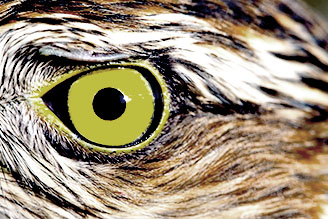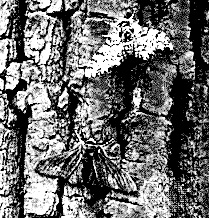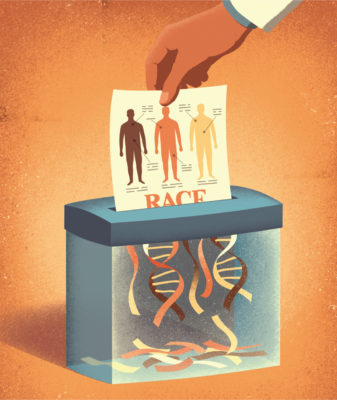by Richard William Nelson | Feb 9, 2017
 Bioluminescence (pictured left) has fueled folklore legends for thousands of years. From the eighth-century Japanese Hotaru firefly legend to the Apache Indian firefly origin of fire celebration, the origin of bioluminescence continues to inspire awe and wonder.
Bioluminescence (pictured left) has fueled folklore legends for thousands of years. From the eighth-century Japanese Hotaru firefly legend to the Apache Indian firefly origin of fire celebration, the origin of bioluminescence continues to inspire awe and wonder.
Describing myths and legends with a natural explanation is what drives scientists. “Researchers have long wondered how bioluminescence came to be,” science writer Steph Yin noted in the article “In the Deep, Clues to How Life Makes Light,” published in Quanta Magazine.
Continue Reading
by Richard William Nelson | Dec 29, 2016
 To think that shape affects function – or form follows function – is an implicit assertion used ubiquitously throughout the evolution industry. This assumption, however, is untested. As an evolutionary biologist, Fouad El Baidouri (pictured right below) of the University of Lincoln, UK, explains –
To think that shape affects function – or form follows function – is an implicit assertion used ubiquitously throughout the evolution industry. This assumption, however, is untested. As an evolutionary biologist, Fouad El Baidouri (pictured right below) of the University of Lincoln, UK, explains –
“Despite a few pioneering attempts to link bacterial form and function, functional morphology is largely unstudied in prokaryotes [microbes].”
Continue Reading
by Richard William Nelson | Nov 17, 2016
 Early northeast colonial settlers, William Bradford and Edward Winslow, in 1620 sent out a business prospectus: “Cape Cod was like to be a place of good fishing, for we saw daily great whales, of the best kind for oil and bone.”
Early northeast colonial settlers, William Bradford and Edward Winslow, in 1620 sent out a business prospectus: “Cape Cod was like to be a place of good fishing, for we saw daily great whales, of the best kind for oil and bone.”
The American whaling industry was beginning. Two hundred years later, New England was the premier whaling center in the world. More than 10,000 men set sail on whaling ships in 1857 from New Bedford, Massachusetts, alone. Indeed, the evolution or extinction of whales was not a popular topic.
Within the next 100 years, during the lifetime of Herman Melville’s mythical Moby Dick (illustrated), the whaling industry was forced to hunt deeper into the ocean and eventually into the southern Atlantic, leaving the North Atlantic population decimated.
Continue Reading
by Richard William Nelson | Aug 25, 2016
 The mystery behind the superiority of bird eyesight over humans is now more mysterious than ever. Joe Corbo, staring into the eye of a chicken seven years ago, saw something startling carpeting the retina. Rather than randomly distributed color-sensitive cones, like in humans, Corbo observed a uniform distribution of the cones – a pattern previously unrecognized in birds.
The mystery behind the superiority of bird eyesight over humans is now more mysterious than ever. Joe Corbo, staring into the eye of a chicken seven years ago, saw something startling carpeting the retina. Rather than randomly distributed color-sensitive cones, like in humans, Corbo observed a uniform distribution of the cones – a pattern previously unrecognized in birds.
Science writer Natalie Wolchover (pictured right below), in A Bird’s-Eye View of Nature’s Hidden Order published in Quanta Magazine in July, reported that while cones were remarkably uniform in distribution, the actual cone locations seemed haphazard. “The dots’ locations followed no discernible rule, yet never seemed too close or too far apart” – a strange mix of bird-eye random regularity.
Continue Reading
by Richard William Nelson | Jul 28, 2016
 In the native land of Charles Darwin, for the first time, the Royal Society is challenging evolutionary academia to develop a new theory of biological evolution. As the original science organization in Western Civilization, the Society explains the problem with today’s most popular current theory:
In the native land of Charles Darwin, for the first time, the Royal Society is challenging evolutionary academia to develop a new theory of biological evolution. As the original science organization in Western Civilization, the Society explains the problem with today’s most popular current theory:
“Developments in evolutionary biology and adjacent fields have produced calls for revision of the standard theory of evolution, although the issues involved remain hotly contested.”
Increasingly, the standard theory of evolution has been challenged in the wake of the twentieth-century genomic revolution.
Continue Reading
by Richard William Nelson | Jun 29, 2016
 Britain’s peppered moth has long served as an iconic example of evolution. This month, a new genetic discovery sheds light on the moth’s once-iconic status. As ScienceDaily reports –
Britain’s peppered moth has long served as an iconic example of evolution. This month, a new genetic discovery sheds light on the moth’s once-iconic status. As ScienceDaily reports –
Researchers from the University of Liverpool have identified and dated the genetic mutation that gave rise to the black form of the peppered moth, which spread rapidly during Britain’s industrial revolution. The new findings solve a crucial missing piece of the puzzle in this iconic textbook example of evolution by natural selection.”
Continue Reading
by Richard William Nelson | May 19, 2016
 “The Brain defects caused by the Zika virus could set evolution back 2 million years, scientists claim” was the leading story in the UK’s Daily Mirror in February. Since then, the global spread of the Zika virus, previously known as a rare virus, continues as a leading headline story – for good reasons. As CNN reports, “This is the first time a mosquito has been found to cause congenital birth defects.”
“The Brain defects caused by the Zika virus could set evolution back 2 million years, scientists claim” was the leading story in the UK’s Daily Mirror in February. Since then, the global spread of the Zika virus, previously known as a rare virus, continues as a leading headline story – for good reasons. As CNN reports, “This is the first time a mosquito has been found to cause congenital birth defects.”
The New England Journal of Medicine published the article entitled “Zika virus and Birth Defects — Reviewing the Evidence for Causality” on April 13, written by a team headed by Sonja Rasmussen at the U.S. Centers for Disease Control and Prevention (CDC).
Continue Reading
by Richard William Nelson | Apr 21, 2016
 J. Craig Venter, best known for being the first to sequence the human genome in 2000, is recognized as one of the leading scientists of the 21st century. Ten years after his essential accomplishment, Venter was credited for successfully recreating “the first synthetic species” in 2010, named Mycoplasma laboratorium.
J. Craig Venter, best known for being the first to sequence the human genome in 2000, is recognized as one of the leading scientists of the 21st century. Ten years after his essential accomplishment, Venter was credited for successfully recreating “the first synthetic species” in 2010, named Mycoplasma laboratorium.
In his relentless pursuit to “understand the molecular and biological function of every gene in a cell,” Venter released the latest findings discovered in his genetics research laboratory in Southern California. The paper, entitled “Design and Synthesis of a Minimal Bacterial Genome,” was published on March 25, 2016, in the journal Science. The findings have emerged as a new genomic evolution nightmare for Craig Venter.
Continue Reading
by Richard William Nelson | Mar 3, 2016
 R2D2, short for Artoo-Detoo, is best known as the fictional robotic character in the Star Wars universe series created by George Lucas. Inducted into the Robot Hall of Fame in 2003, R2D2 has since been included in the Smithsonian Institution’s list of 101 Objects that Made America.
R2D2, short for Artoo-Detoo, is best known as the fictional robotic character in the Star Wars universe series created by George Lucas. Inducted into the Robot Hall of Fame in 2003, R2D2 has since been included in the Smithsonian Institution’s list of 101 Objects that Made America.
R2D2 is the good guy, the favorite character of George Lucas, known for always saving the day at least once in every film. However, R2D2 disses Darwin.
In the realm of biology, however, the R2d2 gene is a Darth Vader villain terrorizing Darwin’s once-popular theory.
Continue Reading
by Richard William Nelson | Feb 11, 2016
 Starting with his infamous book, The Origin of Species (1859), Charles Darwin legitimized racism based on the theory of evolution, albeit briefly. The complete title contains the essential phrase “preservation of favoured races” –
Starting with his infamous book, The Origin of Species (1859), Charles Darwin legitimized racism based on the theory of evolution, albeit briefly. The complete title contains the essential phrase “preservation of favoured races” –
“On the origin of species by means of natural selection, or the preservation of favoured races in the struggle for life”
How his concept of “races” applies to humans was clarified in The Descent of Man (1871). Darwin explains –
“The sole objective of this work is to consider… the value of the differences between the so-called races of man.”
Continue Reading
 Bioluminescence (pictured left) has fueled folklore legends for thousands of years. From the eighth-century Japanese Hotaru firefly legend to the Apache Indian firefly origin of fire celebration, the origin of bioluminescence continues to inspire awe and wonder.
Bioluminescence (pictured left) has fueled folklore legends for thousands of years. From the eighth-century Japanese Hotaru firefly legend to the Apache Indian firefly origin of fire celebration, the origin of bioluminescence continues to inspire awe and wonder.
 To think that shape affects function – or form follows function – is an implicit assertion used ubiquitously throughout the evolution industry. This assumption, however, is untested. As an evolutionary biologist,
To think that shape affects function – or form follows function – is an implicit assertion used ubiquitously throughout the evolution industry. This assumption, however, is untested. As an evolutionary biologist, 
 The mystery behind the superiority of bird eyesight over humans is now more mysterious than ever.
The mystery behind the superiority of bird eyesight over humans is now more mysterious than ever.  In the native land of
In the native land of  Britain’s
Britain’s  “The Brain defects caused by the Zika virus could set evolution back 2 million years, scientists claim” was the leading
“The Brain defects caused by the Zika virus could set evolution back 2 million years, scientists claim” was the leading 

 Starting with his infamous book,
Starting with his infamous book, 